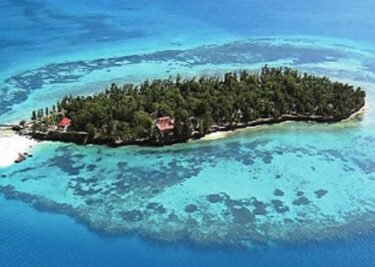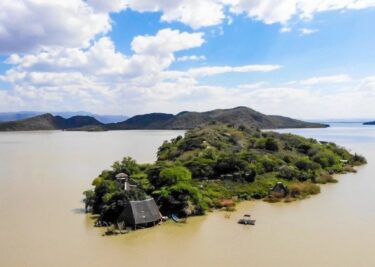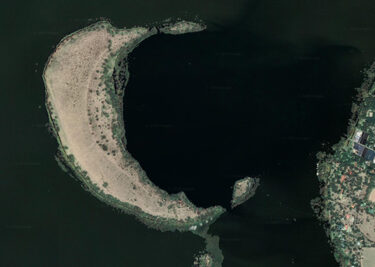Lake Turkana Islands
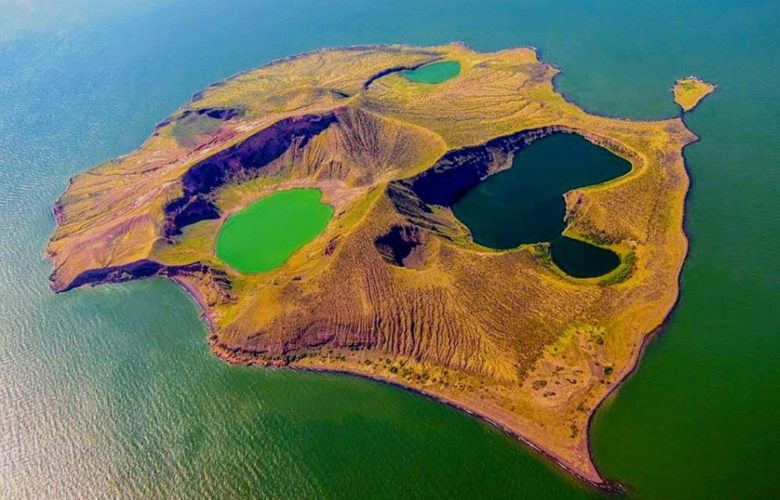
Central Island sourced from Hub Africa
A cartographical view of Kenya highlights a long narrow water body carving its way through the northwestern part of the country. This water body is Lake Turkana, and on maps, it appears to be just another mass of water represented by the colour blue. Its beauty can only be appreciated after a visit, and possibly even an aerial view. From this vantage point, Lake Turkana’s first noticeable quality is its startling colour. Far from a basic blue, this national natural treasure is a stunning shade of green, one comparable to jade. The other unique features of the lake, which are hard to miss from above, are its two most prominent islands that emerge from its depths.
Central and South Islands
As their names denote, Central Island and South Island occupy completely different parts of the lake. Even to a first-time visitor, the geographical differences between the two are easy to spot. Central Island is characterized by three active volcanoes that belch sulphur and smoke, giving the isolated land a dark air of mystery. Also on the island are three water-filled craters that have given rise to three lakes within the lake. The shallow waters provided by Crocodile Lake, Flamingo Lake, and Tilapia Lake are the breeding grounds of the world’s largest concentration of Nile crocodiles.
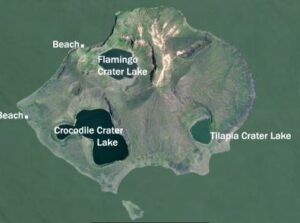
Lakes on Central Island. Image sourced from The Standard.
South Island, on the other hand, has only one central peak and is home to an abundance of bird species. The distinctive appearances of these islands add to the allure of Lake Turkana and raise questions about their formation. To the Turkana people, there is an old folklore that explains how the lake itself as well as its islands came to be.
Paukwa? Pakawa!
As the legend goes, there was a time when a great famine descended upon the land of the Turkana. Many people and livestock perished, and those who survived had very little to eat and drink. Their only option for survival was to migrate. Gathering what little strength they had left, the community set off on a westward exodus, moving relentlessly through parched arid land until they came across a valley through which a small spring emerged. The valley was teeming with pasture which the remaining livestock grazed on immediately. Right above this stream was a huge rock that regulated the amount of water that surfaced. The Turkana were careful to only move the rock when fetching water and made sure to replace it after drinking to their fill.
One evening as the sun dipped into the horizon, deepening the shadows, two girls made a last-minute trip to the spring. In their rush to get back home before dark, they forgot to replace the stone lid on the spring. Water slowly began to rise that night, swallowing large tracts of land and drowning those who had settled in the heart of the valley. The error went unnoticed until daybreak, when those who had settled further from the spring woke up to find an expansive water body where there previously was none. The only areas spared from this flood were the crests of several hills which had now become isolated and turned into islands. It is believed that the spirits of the drowned still reside on these islands, wailing in the dead of night as they remember the tragic way in which they died.
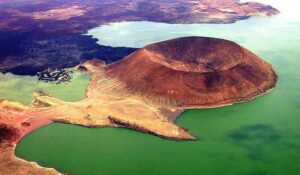
South Island sourced from Amboseli National Park.
The Islands of Mystery
No doubt the islands of Lake Turkana draw visitors eager to see Kenya’s northernmost islands, and perhaps even those who visit to hear the lake’s origin story from locals. Have you toured any of these islands before? Share your experience of travelling to the heart of the largest permanent desert lake in the world!
#VisiwaVyetu

